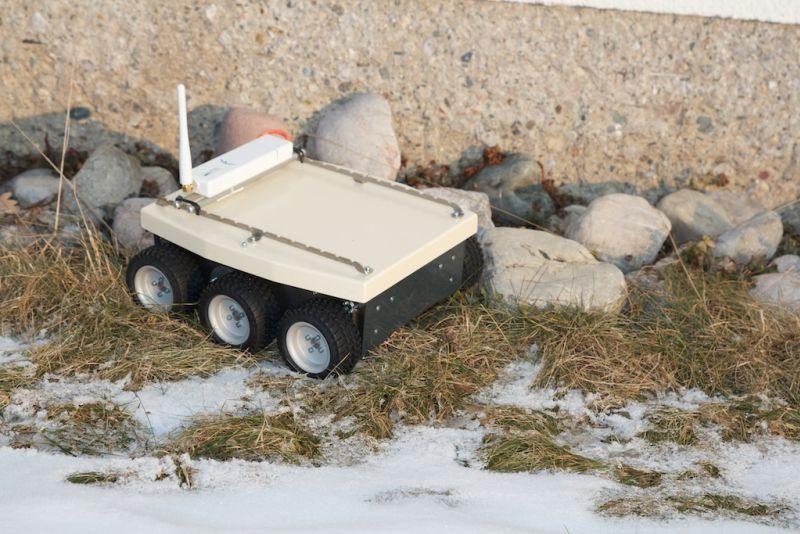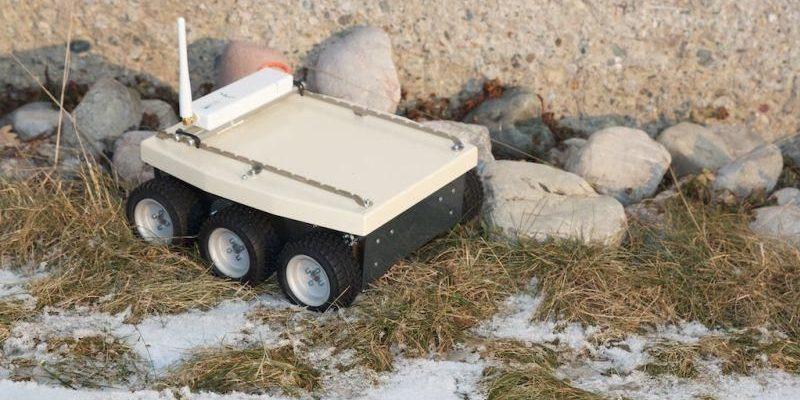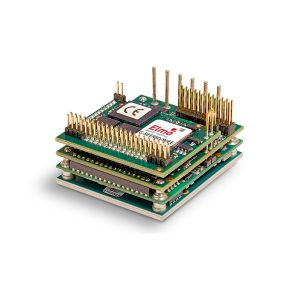Background
Roboterwerk GmbH manufactures rugged, outdoor, unmanned vehicles. The company developed the Forbot, a radio-controlled, portable, all-terrain robot made from aircraft-grade aluminum. Built for both civilian and harsh environment applications, all design elements were ruggedized to enable it to operate in a wide range of environmental conditions while maintaining compliance with strict harsh environment standards.

Read this case study to learn about:
- How to get up to 5.6 kW of peak power using a matchbox sized servo drive
- Achieving superior motion control in remote-controlled devices
- Designing high-precision, harsh environment grade robots for use in extreme conditions
Machine Requirements
The small robot, at just 60 x 50 x 20 cm, had to weigh enough to be stable and yet be light enough to be portable, with a net weight of up to 20 kg. A six-wheel robot consists of a lower shell, which housed the electronics, and a flatbed platform that could be customized for a wide range of client applications. Most customer enhancements were expected to be lightweight, but the robot had to be able to handle payloads of up to 30 kg, for a gross weight of up to 50 kg. The robot needed to be able to function in cold, snowy conditions and in desert environments.
The Forbot required high power output to maneuver and reach the speeds required for harsh environment operations. It also needed superior motion control to enable swift and smooth operation in unpredictable conditions, including the ability to turn on its own wheelbase to negotiate tough terrain. It had to maintain high reliability in all conditions given its high cost and mission-critical payloads.
Motion Control Solution
- Gold Bee servo drive
Note: For industrial applications Elmo’s Gold Twitter may be used instead.
Two Gold Bee servo drives were chosen for this application, due to their compact size (35 x 30 x 14.4 mm) and light weight (23 g). The G-BEE has a peak output of 5.6 kW – 30 A at 100 V, enabling optimal performance even when the Forbot has a full 30 kg payload. It is PCB-mounted so it can be integrated into the robot, and Elmo supplied detailed documentation and consulting services for product integration on the PCB, enabling the best possible fit for the application.
The Gold Bee is a member of Elmo’s ExtrIQ product family, designed especially for rugged and extended environment conditions (EEC), allowing the drive to operate in extreme conditions.
Elmo’s proprietary Elmo Studio software was used to program the Gold Bee commands, allowing the robot to perform precise tasks that require rapid and accurate movement. An iPhone app was developed to send commands directly to the controller in Elmo’s programming language. Using Apple’s touch screen technology, navigation is incredibly simple.
Results
Gold Bee drives proved they can perform sophisticated motion control loops to deliver the required precise movement, feedback inputs, programming capabilities and communication support, with the high power-density and intelligence needed for harsh environment applications.
Part of the ExtrIQ product range built for rugged conditions, the G-BEE drives met all the requirements for the Forbot, minimizing Roboterwerk’s development time and time-to-market.
Gold Bee
High Current NANO Servo Drive
80A/80VDC, 70A/100VDC, 10A/200VDC
For More Information



